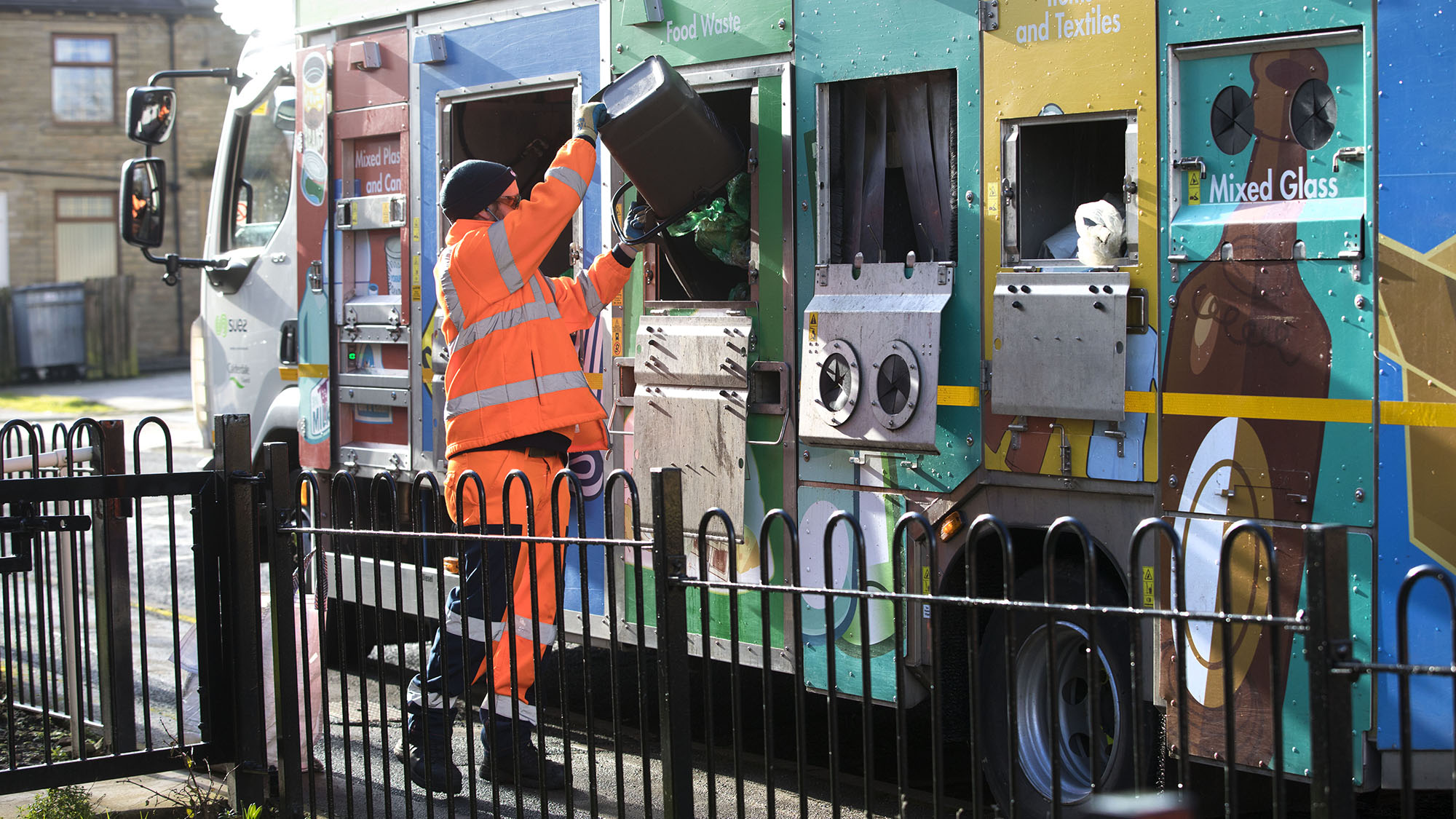Modern MRFs - what’s next for materials segregation, separation and recycling?

Materials market concerns
It doesn’t seem all that long ago that China’s closure of its low grade and mixed plastics markets to all overseas material streams was rocking the sector and making headlines far and wide globally. But, the current COVID-19 pandemic has somewhat overshadowed the global markets debate in recent months.
However, the continuing ripple effect of China’s market closure, and the significant restriction of end markets, can be seen from Australia to the UK, with many authorities and their contractors reassessing the mix of materials collected at the kerbside, and how their processing sites operate, to minimise contamination and maximise the opportunity to secure the available end markets for HDPE and PET (such as milk bottles and water bottles) in particular. Some authorities in the UK have stopped collecting pots tubs and trays to help improve the overall quality of the plastic streams handled. Whilst others have worked closely with their contractors to improve household information, communications and feedback about target materials and unwanted materials in the local collection system.
The UK’s reliance on overseas markets reflects a lack of UK policy supporting UK reprocessing and manufacturing over the last 15 years. During this period the market solution was largely cost effective and deliverable. However, the recent closure of international markets in India, Malaysia, Vietnam and Indonesia has further highlighted the fundamental problem with the UK plastics recycling sector. Namely, we are collecting a mixed stream, which is insufficient quality when end market specifications have been tightened – clearly, it is time for a change!
Recent months have also seen a similar situation with Chinese paper markets. The downstream impact has been felt far and wide, as paper exports have had little or no value, ultimately undermining the entire cost model for many local authority services. While this dip in commodity prices is expected to come to an end, this has surfaced some questions about the design of many UK recycling collection and materials handling services. In my opinion, this poses an opportunity. Planned changes in local collections and sorting services as a result of the upcoming policy changes enables waste collectors to re-evaluate their services, designed with quality as a priority. Which is why we expect a switch from fully commingled dry mixed recycling (DMR) to more source segregated solutions, which will create higher quality materials which are more attractive for the end market. At the same time, the UK government and the devolved administrations, are developing radical plans for new legislation on extended producer responsibility (EPR) and consistent collections. This seems to be the ideal time to reflect on the role of the materials recycling facility (MRF) in future service provision, as they have dominated the sector for the last 20 years or so. The expected policy revolution between now and 2023, if done correctly, could significantly transform the quality of the materials we handle and how we handle them.
MRFs – what should we expect?
Given the upturn in concerns about end markets, the increasing requirement for higher quality materials and the impending new policy agenda from the UK government, things will likely change.
From 2023, producers will be liable for the costs of all packaging placed on the market from collection and reprocessing to litter and education, potentially driving more circular solutions. In 2022, the new plastic tax for bottles with less than 30% recycled content is due and will drive end market demand. As such, there is a clear expectation that quality of the recyclables will be an important aspect in the future local authority strategy, service design and delivery. Consequently, collection services will have to adapt and that may call the role and function of MRFs into closer order.
MRFs have come a long way in the last 20 years, through market demand, innovation and closer regulation and their evolution will be just as rapid and impressive over the next decade. They were once simple manual picking belts, operating at slow speeds and delivering low capture rates. Now, they have evolved to faster, highly automated, more effective sites, designed to capture a much wider array of material types, of a quality demanded by known end markets). I remember working at London’s first MRF back in 1995, with limited target materials, a capacity of 15,000 tpa, an under-resourced workforce, and a low-quality feedstock, full of non-target materials and contaminants. Nowadays, when I visit our state-of-the-art facilities in Avonmouth, Aberdeen, Newcastle and Birmingham, the transformation is almost unbelievable. The feedstocks are often better quality, with more automated sorting. There are eddy current separators and over-band magnets sorting aluminium and steel, trommels and sifts to pull off the card and paper and near infra-red tech to help segregate different plastic polymers. Furthermore, there is an increased focus on both process efficiency and the quality of products.
We are already seeing additional advances in MRF operation with the use of artificial intelligence to help improve the separation of target materials. Alongside other contractors, we have trialled these across several sites and the results have been encouraging. Machine learning enables the system to adapt to changing materials and designs. We are already seeing machines that can sort by refraction of laser beam, as well as embedded RFID chips and QR codes. In the not too distant future, we anticipate machines will be able to sort by object shape as well as brand (logo and colours). These advances will be significant in ensuring collected materials which are mixed together are still sortable and reprocessable before sending them on to the next stage of refining or remanufacturing. It’s important that any products meet the increasingly stringent end market demands.
What’s more, MRFs may also become happy partners with chemical recycling solutions, which will target the lower grade plastics, films and composite packaging. With MRFs expected to receive a changing feedstock in the near future, consider the potential impact of DRS on stripping out some packaging from the household and commercial waste streams. There is also the effect of EPR on packaging design with a likely alignment of packaging materials and styles to enable them to be easier to sort. Moreover, the result of consistent collections make the feedstocks less contaminated. Existing MRFs may have the capacity and in some cases the space, to share sites with partner technologies designed to handle specific material streams, which might become part of the core requirement for collections from both household and commercial properties.
Looking ahead -2023 and beyond are MRFs in decline?
Potentially the biggest change to come following the proposed EPR reform, will be that the full net costs of capturing and putting the target materials back to use in the circular economy, will be met. This full cost will be met by the brands, who are the producers, and this should see many local authorities re-evaluating their preferred choice of collection. Wales and Scotland have had preferred source segregation services with sorting at the kerbside for many years. This is because of their ability to influence residents and users, when they contaminate for example, resulting in better material quality. Similarly, England’s new policy agenda looks to be favouring a significant expansion of kerbside sort services to drive up ‘consumer responsibility’ and improve the quality of materials for reprocessing.
Authorities are likely to be less worried about delivering the cheapest service (commingled). Therefore, we expect a significant rise in authorities coming to market or designing their own services for source segregated or partially source segregated solutions. This has the potential to improve quality, to help ensure materials flow back through the economy, and ensure that they are paid fully by the brands for the target materials they have secured. As a result, this presents an opportunity for companies, businesses, and other commercial sites, who should have a wider service offering available locally, enabling them to benefit from more source segregation and the possibility of rebates for the target materials that they are segregating properly.
Thankfully, the days of the MRF are not over, despite the expected switch to source segregated collections. Some areas will not suit source segregation, such as rural Cornwall or the congested centre of London or Birmingham. Furthermore, not all materials will be fully segregated at source, plastics and cans may still be mixed, whilst glass, paper and card, and textiles may be kept separate. With this in mind, MRFs are likely to still be going strong in 2030. Their role will adapt to suit the new material flows and the demands of the end markets they fuel. Some MRFs may sort PET from HDPE, and steel cans from metal cans, whilst other sites might sort paper and card from steel and aluminium. Geography will be a determining factor of the type of infrastructure available, and this will ultimately influence the types of collection service on offer.
However, with ongoing advances in IT, automation and machine learning, all future MRFs will be more like the production lines at Toyota and JLR, than any MRF you recollect from the 1990s. They will be clean, effective, fast and driven by the quality specification for the products leaving the site, and as a result will be hot on the quality control of the materials coming in. With this in mind, when you put your recyclables out in the future, be sure to get it right otherwise you will most likely get some feedback at the kerbside from the collection team, or at the MRF from the quality controllers in the tipping hall. Quality is most definitely king, and the resources and waste sector is adapting quickly to the demands of a quality driven system.
I think the future is bright in terms of material quality, end markets and surprisingly MRFs, but there is significant change coming. Services and sites will have to adapt, as will our customers. If you have any concerns or want to talk about some of these likely changes, then please get in touch with me, [email protected].
